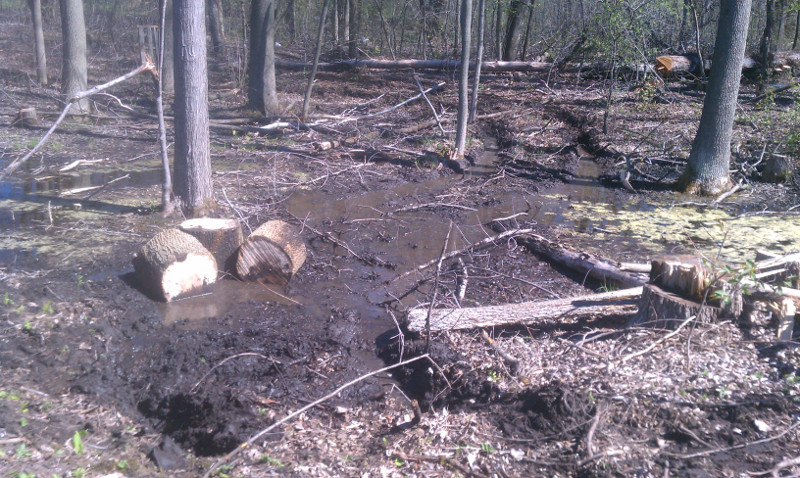The guidelines that the forest I worked for used, were no operations if ruts exceeded 6 inches deep for a distance of 10 feet. Do you backblade them? Construct waterbars after skidding is done if on a slope? I realize we were very strict, but we also required that skid trail locations, and landings be flagged in and approved by the forester before falling began. Equipment, except for a feller buncher if used, was required to stay on those trails. That way, you are not running to each log and impacting a lot of ground. We shot for 10% of the acreage to be used for skid trails. That means line pulling if a feller buncher or shovel is not being used to bunch logs near the skid trails. The loggers are used to these requirements.
Keeping damage to a minimum while logging is one thing, and doing the "cleanup" work after the logs are out is another. Both are important.
If you are in the logger referral business, are you driving out and watching operations? Finding out who did what area?
My friend was hesitant about logging her place, again. She runs the family tree farm and had witnessed some poor practices. Another friend and I suggested she go look at a nearby operation to see what good logging looked like. She did and she hired the outfit to log her place. The logger was exceptional, has been to the classes we have in our state for logger accredation, and asked what she wanted the stand to look like after logging. She told him. He asked to log it without her marking the trees to take--he used a processor. She nervously agreed and ended up with a beautiful stand left. The guy was one with his processor, his skidder operator had worked for him for ages and did what he was told, and there was a brother who specialized in road building.
A beauty of a job, although you could tell where the skid trails were afterwards. The guys did not work when it was too wet so there were no ruts, plus they used a high track grapple cat for skidding. Sometimes tracks are better than wheels. Using how deep the ruts can get before you get stuck as a rule is not acceptable in our world.
Equipment and operator know how, plus some involvement by the landowner or a hired forester type, and a contract specifying what is acceptable, is what will get you minimal impact.




























































